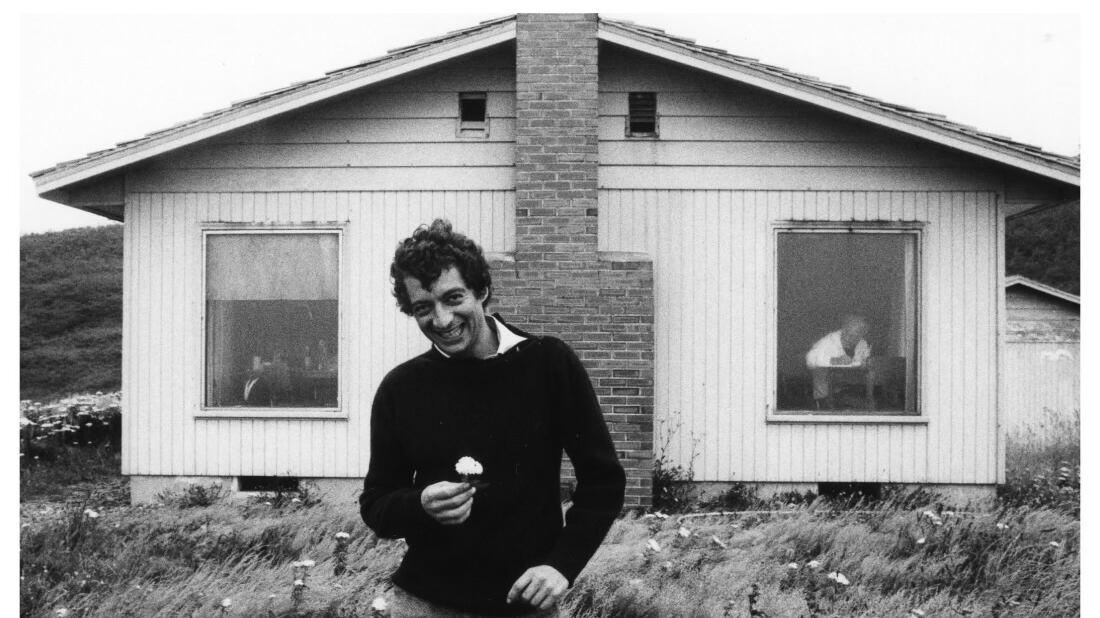Seven nights of Philippe Mora movies may scratch the surface of his 50-year filmography, but it’ll never exhaust his story supply. Put it this way: This article didn’t have room for phone calls with Francis Ford Coppola, an intelligence agent questioning Mora on an airplane, and three Dennis Hopper yarns.
If you want to hear those, the director will attend every night of Cinemagic’s Mind of Mora series. The theater will screen seven titles from the filmmaker’s eclectic career: verité documentaries (Swastika), an influential Aussie Western (Mad Dog Morgan), harrowing genre films (The Beast Within, Communion), and meta-satires (Howling III, Pterodactyl Woman From Beverly Hills, Art Deco Detective).
“I’m honored by this,” Mora says, “and particularly that…this sounds like the title of a movie: It Came From Portland.”
Cinemagic co-owner Ryan Frakes says last year’s VHS Night screening of Howling III: The Marsupials (the second of Mora’s two Howling sequels) elicited one of the theater’s best-ever audience reactions. After digging into Mora’s oeuvre (even ordering the Art Deco Detective DVD from Australia), Frakes invited his “favorite B-movie director” to town for his first-ever U.S. retrospective.
Ahead of time, we chatted with Mora about werewolf transformations, Cannes Film Festival riots, Christopher Walken, and more.
WW: The last time you were in Oregon was 1978, and you hung out with Ken Kesey, yes?
Philippe Mora: I was making a documentary about the ‘60s called The Times They Are a-Changin’, which got closed down because the studio, Columbia, thought it was going to be too controversial. But that’s how I met Kesey.
He had a beach house and a lot of groupies in his house—male and female. He said to me, “You know, people are crazy. Watch this.” And he pulled a handful of M&Ms from his pocket. And he said, “Listen up, everybody! I just got the strongest acid you’ve ever had, just came from San Francisco. Now, everyone can have one, but you may never come back [to the house]!”
He puts a hand out with the M&Ms and they all grab one! And he winked at me and then, of course, nothing happened. Except one guy started going crazy. Jumping up and down. Obviously, his mind was stronger than the M&Ms. So that was my Kesey [experience]. Talk about Merry Prankster.
Is it true that when your documentary Swastika (1973) screened at Cannes, people threw chairs?
Absolutely true. This was the first time Hitler had been seen on a huge screen in color…shots of Hitler playing with children and these dogs and everything. Of course, the whole point of the film was that Hitler didn’t come from Mars. If we don’t see the fact that he was a human being, you’re not going to see the next Hitler coming. Well, that very point is what drove the French people in the audience nuts. I thought my career was over.
What’s your favorite Dennis Hopper memory from Mad Dog Morgan (1976)?
He’d been raging all night in the bush with buddies, and I was sitting next to him and we’re going to do a scene. And I looked over to him and he started crying. And I said, “What’s up?” And he said, “I’m just thinking of Jimmy.” James Dean.
In Howling III, arguably the best werewolf transformation occurs at the Sydney Opera House during a ballet rehearsal. How technically challenging was that sequence?
It’s in the editing, you know? “Cut. Put more hair on the guy. Cut. Put more hair on him. Cut.” Basically, my affection for that scene is the idea. I just love the idea of turning into a werewolf in the middle of a ballet.
Communion (1989) is such an anguished alien abduction story. How focused were you on bringing family drama to the foreground?
I was very focused on it. Lindsay Crouse [who played Anne Strieber] was breaking up with her husband, David Mamet. And she brought that to her performance. It fit into the story—the trauma of the family—because was [the protagonist] nuts? Or was he actually abducted? And that’s a very difficult thing to deal with, especially in a so-called Hollywood movie. To the studios, ambiguity is like malaria or something.
Christopher Walken dances a bit with the aliens in Communion. Was that in the script, or do you just get some dancing when you cast Walken?
The point of that was, if you meet aliens, how do you communicate? No one knows. But dancing may be a way! Of course, Chris will take any excuse to dance.
As you get into the ‘90s and movies like Pterodactyl Woman From Beverly Hills and Art Deco Detective, you start dialing in this satirical, hyper-film-literate directorial voice. How did that happen?
I started having problems dealing with studio executives because all they wanted was formula movies. And I just couldn’t stomach it, to be honest. My father was, among other things, a fantastic art dealer. I remember him telling me the subject of the best art is art itself. And I kind of transferred that to movies.
You have seven projects listed on IMDb in pre-production and were just shooting in Australia. What were you working on?
The Man Who Thought He Was Salvador Dalí and The Oumuamua File, a sci-fi film reexamining some of the things in Communion.
SEE IT: Mind of Mora: The Uncanny Films of Philippe Mora screens at Cinemagic, 2021 SE Hawthorne Blvd., thecinemagictheater.com. Friday-Thursday, Oct. 13-19. $5-$9 per film.
